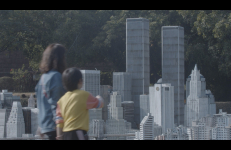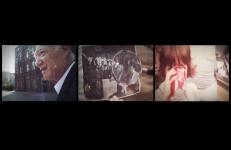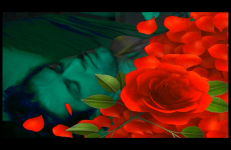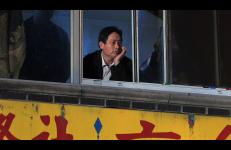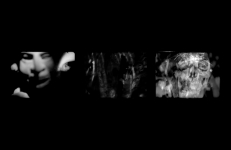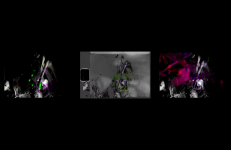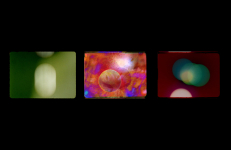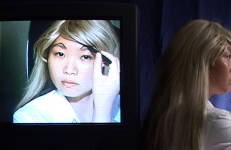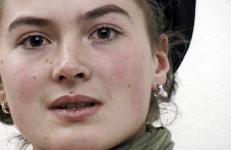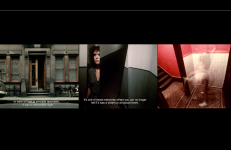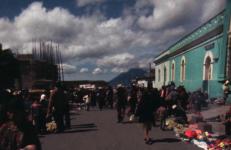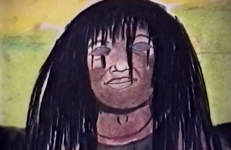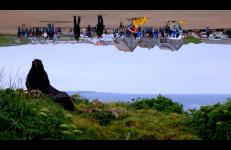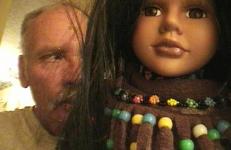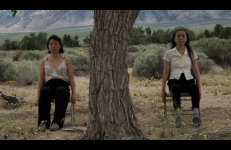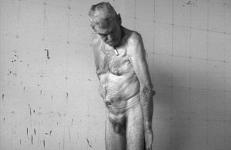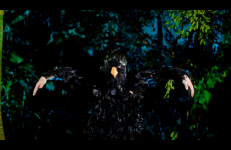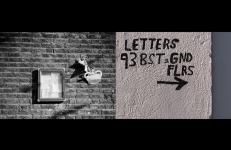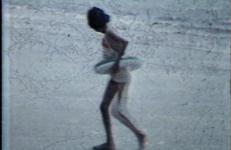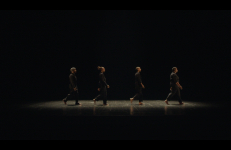A personal essay about connection and disconnection, in and through different realities.
Memory
This Was Home is comprised of three channels, which present three generations of the artist’s family. On one screen Levy presents her maternal grandfather, Karl Ribstein, another shows her father, Yossi Levy, and the third presents the artist herself. Levy documented each of these protagonists on a journey back to their childhood city and to the home where they grew up, which they had not revisited since having to leave it in their childhood.
Embark on an expressive excursion into the body of a young man who’s lips issue words from his soul. Hear his passionate heart-beat, and see the wounds inflicted by bitter "truths", – but notice too his eyes that sparkle with inner strength against the "pitfalls" in life. This movie will grab you and not let go.
A man returns, after fifty years, to Chinatown to care for his dying mother. He is a librarian, a re-cataloguer, a gay man, a watcher, an impersonator. He passes his time collecting images that he puts before us – his witnesses and collaborators. Sitting in the dark, we share his cloak of invisibility, both a benefit and a curse.
The projection and screens in this installation are access points meant to connect the present to an ancestral past. Evoking the ritualism of Aztec cosmology, this experience recalls lumbreras – circular excavation holes in archeological sites, such as the recently found Tzompantli (skulls ceremonial rack) at the Templo Mayor in Tenochtitlan (Mexico City). The use of obsidian crystal as a nuclear filter in the chamber is also essential.
The projection and screens in this installation are access points meant to connect the present to an ancestral past. Evoking the ritualism of Aztec cosmology, this experience recalls lumbreras – circular excavation holes in archeological sites, such as the recently found Tzompantli (skulls ceremonial rack) at the Templo Mayor in Tenochtitlan (Mexico City). The use of obsidian crystal as a nuclear filter in the chamber is also essential.
The projection and screens in this installation are access points meant to connect the present to an ancestral past. Evoking the ritualism of Aztec cosmology, this experience recalls lumbreras – circular excavation holes in archeological sites, such as the recently found Tzompantli (skulls ceremonial rack) at the Templo Mayor in Tenochtitlan (Mexico City). The use of obsidian crystal as a nuclear filter in the chamber is also essential.
The projection and screens in this installation are access points meant to connect the present to an ancestral past. Evoking the ritualism of Aztec cosmology, this experience recalls lumbreras – circular excavation holes in archeological sites, such as the recently found Tzompantli (skulls ceremonial rack) at the Templo Mayor in Tenochtitlan (Mexico City). The use of obsidian crystal as a nuclear filter in the chamber is also essential.
This project started with an email from a stranger in 2017. The sender was the widower of the late artist Tania and he invited the filmmaker to look at her “archive.” Tania was born to Jewish parents in Poland in 1920. The family moved to Paris in the 1930s, but during the WWII they fed to Montreal, then emigrated to New York. Tania eventually became an artist. While facing many hurdles as a female artist in the 1960s and 70s, Tania vigorously created a wide range of artworks, not only paintings and three-dimensional pieces, but also public art projects.
This performative video addresses a conflict of spectatorship: dialectics relationship among memory, interpretation, and reality.
An intimate dialogue with Soha Bechara, ex-Lebanese National Resistance fighter, in her Paris dorm room. The interview was taped during the last year of the Israeli occupation, one year after her release from captivity in El-Khiam torture and interrogation center (South Lebanon) where she had been detained for 10 years—six in isolation. Revising notions of resistance, survival, and will, the overexposed image of the survivor speaks quietly and directly to the camera—not speaking of the torture, but of separation amd loss; of what is left behind and what remains.
Produced in former Yugoslavia (Bosnia-Herzegovina, Croatia, Macedonia, Serbia & Montenegro, Slovenia), Austria, USA, Canada, 1999-2003.
Vera is an assisted self-portrait of consumption. The subject is a woman whose passions and compulsions are of spending and loss, taste and subjectivity.
...a meditation on a familiar New York city space in which memories, fantasies and the maniacal intertwine.
With David Warrilow and Nancy Campbell.
–– Ken Kobland
A cross-generational binding of three filmmakers seeking alternative possibilities to the power structures they are inherently part of. Each woman extends her reach to a subject she is outside of. Vever grew out of the abandoned film projects of Maya Deren and Barbara Hammer. Shot at the furthest point of a motorcycle trip Hammer took to Guatemala in 1975, and laced through with Deren’s reflections of failure, encounter and initiation in 1950s Haiti.
A vever is a symbolic drawing used in Haitian Voodoo to invoke Loa, or god.
Clarke works with four men (Paul, Solomon, Eli, and Leslie) making masks for their video image. The video was made through the Arts in Corrections program at the California Institution for Men in Chino, California.
Filmed entirely in Sweden, VIEWFINDER is a surreal sound-film that entangles gestures of place, belonging, and monument. Informed by archival research, oral history, and folk stories, the film focuses on Black immigrants who have recently migrated to Sweden. These performers enact dance-like choreographies in critical sites across the coastal town of Varberg, generated in response to an absence of Black life found in the municipal archives.
An Unangam Tunuu elder describes cliffs and summits, drifting birds, and deserted shores. A group of students and teachers play and invent games revitalizing their language. A visitor wanders in a quixotic chronicling of earthly and supernal terrain. These visions offer glimpses of an island in the center of the Bering Sea.
Alone in an Oklahoma motel room with a mute companion, the talkative one speaks the language of memory as pussycats feast from a canned cornucopia. Murals plaster the vacancy intrinsic to American angst as horse tails whip from annoyance the nagging gnats of tomorrow’s dung: a heap of uncertainty made impotent by the swashes of chipped paint that depict a netherworld of faded dreams and nostalgic neurosis for the future impaired.
On April 30, 2019, Eiko and Alexis Moh, one of Eiko's collaborators in The Duet Project, visited the Manzanar Historical Site. Manzanar was one of ten American internment camps where over 110,000 Japanese Americans were incarcerated during the World War II. At the peak (in September 1942), 10,046 Japanese Americans were forced to live in Manzanar.
This video was shot two days after Manzanar Pilgrimage commemorated its 50th anniversary on site.
Voice: off is the autobiography of a forgotten man. Brain damaged, body violated, emotions crushed, Gerry who rarely spoke has now lost the power of speech. The video camera is his prosthesis and he borrows the memories of people who no longer need them. How can this be a comedy? It is. "Donigan Cumming looks at the violence of time that damages the body and exhausts memories. For the main character in Voice: off, Gerald, the illness is incurable. Two cancers are at work, one of which is attacking his throat.
A documentary fiction inspired on the first accounts of the natural and ethnographic explorations in America by colonizers, missionaries, and scientists. Shot in the Tropical Greenhouse of Lille, France, the film uses both the architecture and the plants of this enclosed botanic garden as narrative supports for an exploratory journey. Led by the voice-over of an explorer, the film explores the notion of exoticism, evokes the violent origins of the so-called "New World" and the endurance of the imagery they engendered.
A Walk with Nigel is a video essay that constructs a dialogue between two artists from two different times, between movement and stillness, between speech and silence. An archaeological study of a community, reawakening the archive in the present. A materialist study of streets and social relations.
In the fall of 1986, Richard Fung made his first visit to his father’s birthplace, a village in southern Guangdong, China. This experimental documentary examines the way children of immigrants relate to the land of their parents, and focuses on the ongoing subjective construction of history and memory. The Way to My Father's Village juxtaposes the son’s search for his own historical roots, and his father’s avoidance of his cultural heritage.
Weaving Stories While Walking, a reading-performance film by Sónia Vaz Borges and Mónica de Miranda, interweaves multiple accounts from members of the resistance against the colonial powers in Cabo Verde, Guiné-Bissau, Angola, and Portugal. It looks at the centrality of individual and collective walking, movement, and affective experiences in understanding the liberation struggles and their legacy in the contemporary times. Weaving Stories While Walking intermingles timely narratives for the current social contexts.




